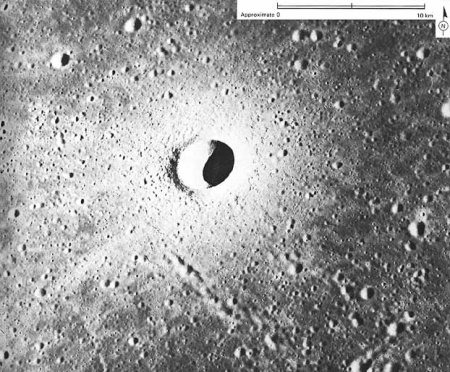ejecta blanket

The 4-kilometer-diameter crater Linne in the western part of Mare Serenitatis on the Moon. This Apollo 15 photo shows the bright ejecta blanket surrounding this relatively very young crater. Image credit: NASA.
An ejecta blanket is a generally symmetrical apron of ejecta that surrounds an impact crater. It is layered thickly at the crater's rim and thin to discontinuous at the blanket's outer edge.
The extent of an ejecta blanket is determined by a number of factors including the size and mass of the impacting body (meteorite, asteroid, or comet), the surface gravity, and the atmospheric pressure. Where there is no atmosphere and the surface gravity is low, the ejecta blanket may extend to several times the radius of the central crater. On the other hand, on a world where both the atmospheric pressure and surface gravity are relatively high, the ejecta blanket will not reach far beyond the crater rim.


